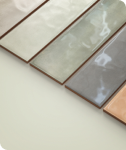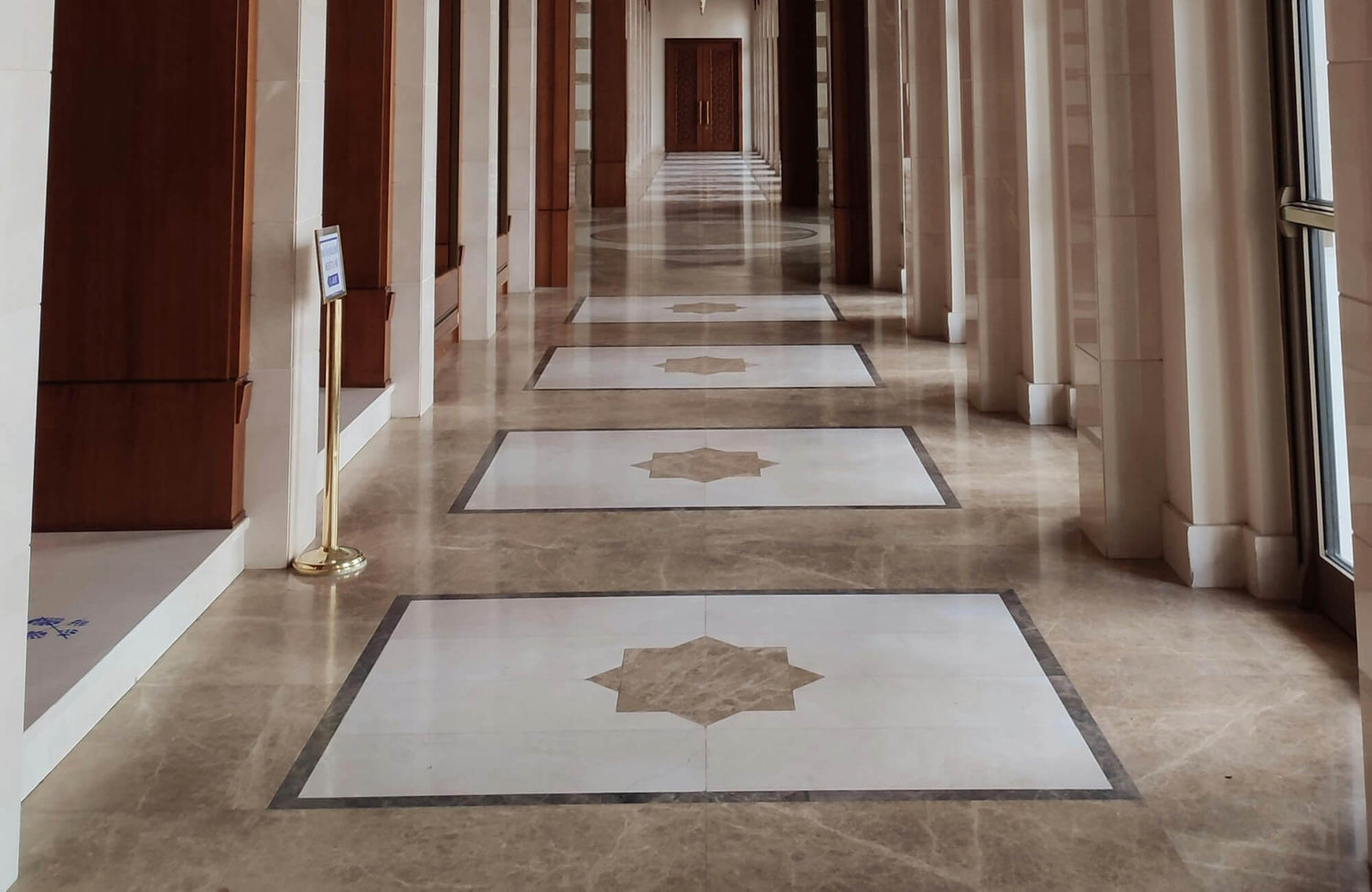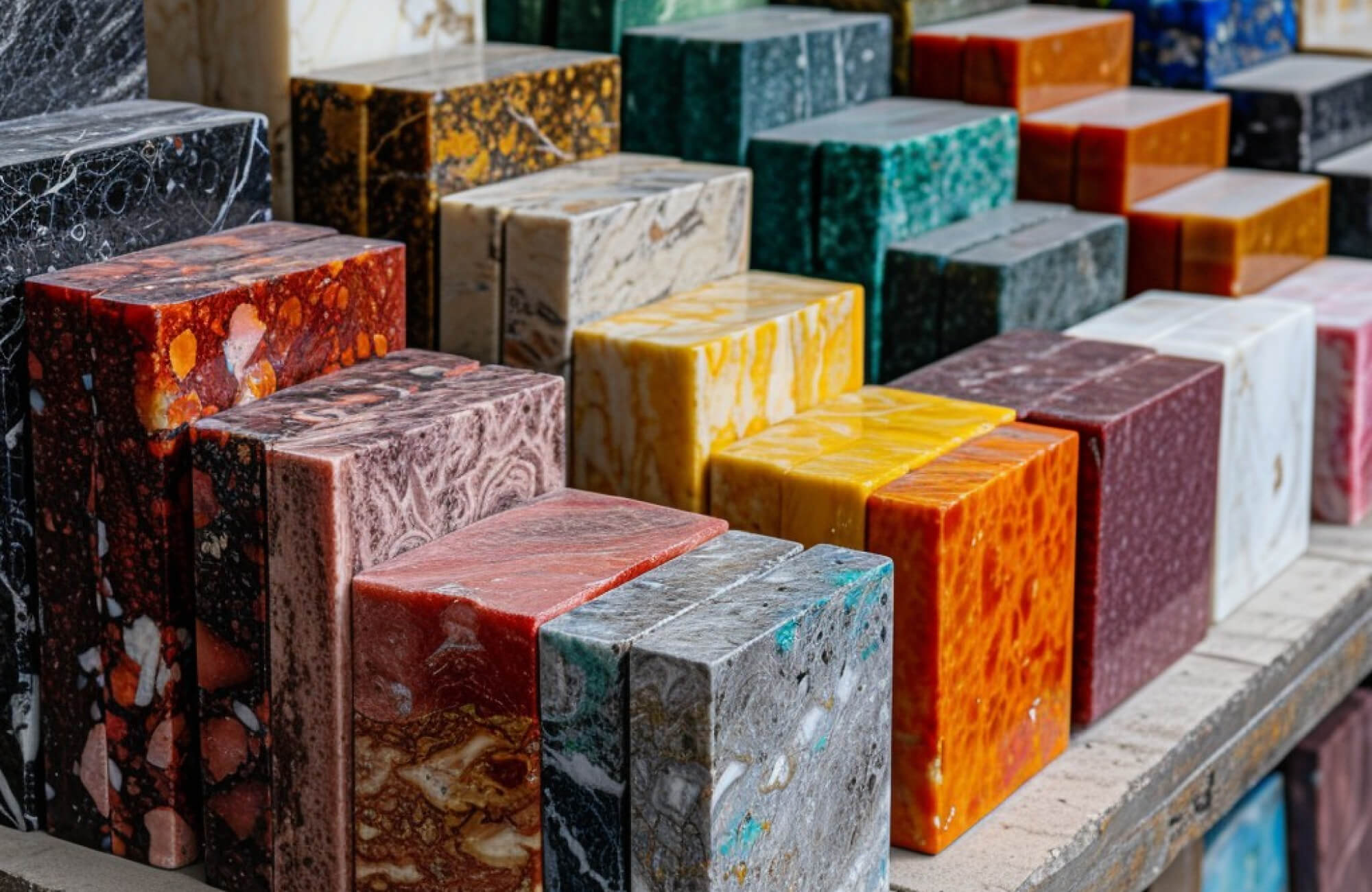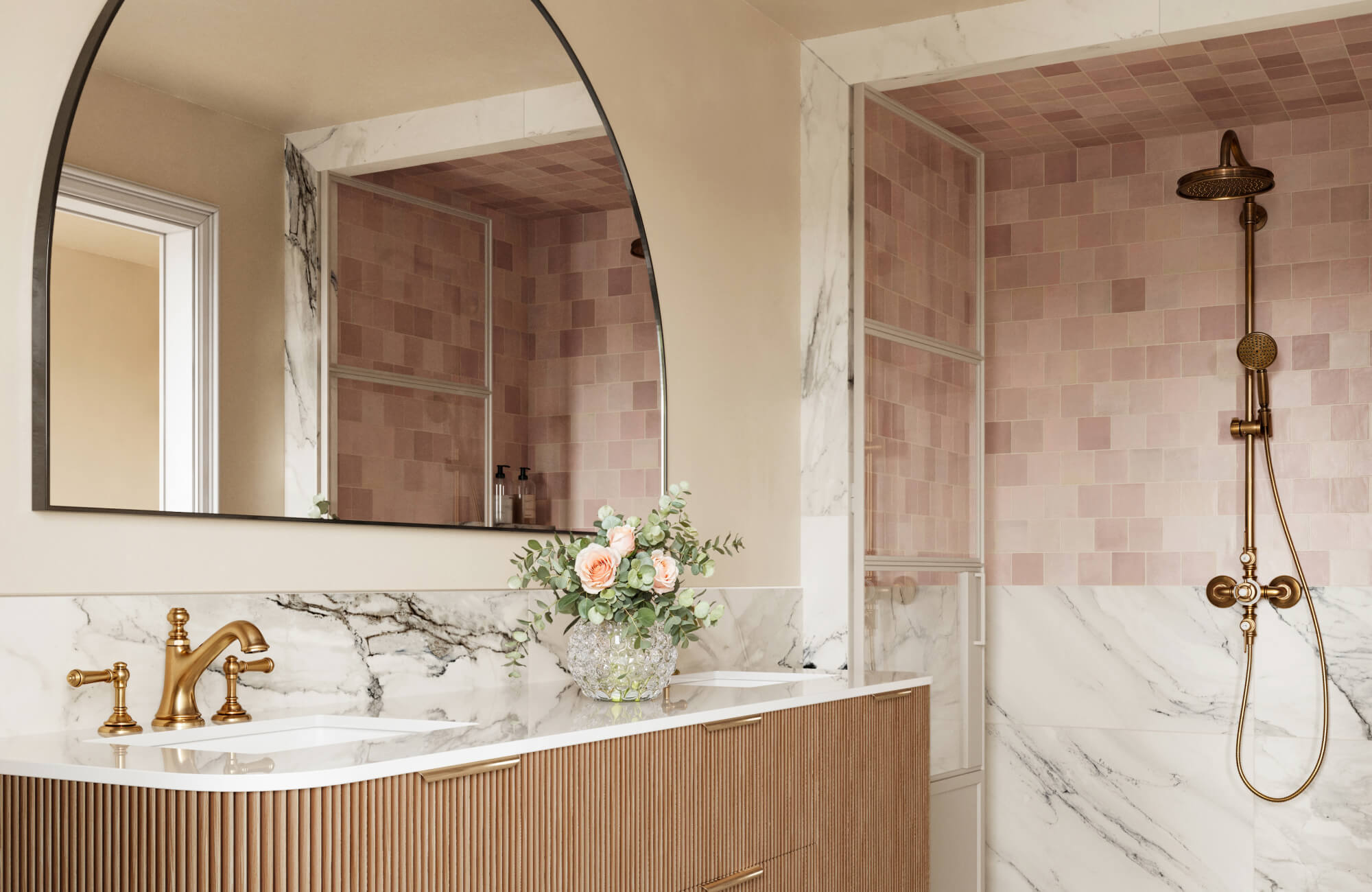Marble has long been revered as a symbol of luxury and sophistication. This metamorphic rock, renowned for its timeless beauty and unique veining patterns, has graced palaces, temples, and grand residences throughout history. Whether polished to a high shine or honed for a more understated finish, marble effortlessly elevates the aesthetic of any space. From the iconic floors of the Taj Mahal to the opulent mansions of European nobility, marble has consistently served as a testament to wealth, power, and refined taste.
However, despite its undeniable aesthetic appeal, marble presents challenges as a flooring material. Its beauty often comes with practical limitations, including maintenance demands, durability concerns, and cost implications. This article explores why marble flooring might not suit every space, examining its limitations, environmental impact, and alternative options.

1. Durability and Maintenance
Marble flooring, while exuding timeless beauty, comes with inherent challenges that demand careful consideration. Its durability is often compromised by its susceptibility to physical damage, environmental factors, and intensive maintenance requirements.
Structural Vulnerabilities
Marble is composed primarily of calcium carbonate, a mineral that gives the stone its signature beauty but also makes it susceptible to damage. Its inherent brittleness means marble can easily crack or chip under heavy pressure or impact. High-heeled shoes, dragging furniture, or even a dropped vase can cause visible fractures. These structural vulnerabilities are particularly concerning in spaces with frequent use or households with active lifestyles.
In addition to cracking, marble’s soft surface makes it prone to scratches and abrasions. Regular use, movement of furniture, and even pet claws can gradually dull its polished finish, diminishing its luster over time. This wear and tear is especially noticeable in commercial settings or busy households, where restoration may be needed more frequently, adding to maintenance costs.
Susceptibility to Stains and Etching
Marble's porous nature makes it particularly vulnerable to staining. Spills from wine, coffee, juice, and acidic substances like vinegar or tomato sauce can seep into the stone’s surface, leaving unsightly and often permanent marks. Even water, if left to pool, can cause discoloration or leave behind stubborn watermarks. Preventing stains requires immediate cleaning and vigilant maintenance, which can be demanding for busy households.
Etching, a chemical reaction caused by acidic substances, poses an even greater challenge. When acidic liquids come into contact with marble, they dissolve the calcium carbonate, leaving dull, pitted marks on the surface. Unlike stains, etching alters the stone’s texture and is difficult to reverse. To mitigate this, homeowners must use pH-neutral cleaners and avoid conventional cleaning products that contain acids.
Maintenance Requirements
Keeping marble flooring pristine requires regular upkeep. Periodic sealing is essential to create a protective barrier against stains and etching. Specialized sealants must be reapplied based on usage and surface wear, requiring time and financial investment. Daily cleaning with pH-neutral products is necessary to remove dirt and grime without damaging the stone. Additionally, professional cleaning and polishing may be required to restore its shine, increasing long-term costs.

2. Practicality and Lifestyle
While marble’s beauty is undeniable, its practicality varies depending on lifestyle and environmental factors. Here are some key considerations:
Cold Underfoot
Marble’s naturally cool surface can be a blessing in warmer climates but a drawback in colder regions. Walking barefoot on marble during winter can be an uncomfortable experience, especially for children or individuals sensitive to cold. While underfloor heating can mitigate this issue by providing consistent warmth, installing such systems adds to the overall cost and complexity of the project. For households without underfloor heating, marble’s lack of temperature insulation can detract from its comfort.
Safety Concerns for Families
For families with children or pets, marble flooring presents significant safety and durability challenges. Its smooth, polished surface can become slippery when wet, increasing the risk of slips and falls. This is particularly concerning in busy areas like kitchens and bathrooms. For households with pets, marble is susceptible to scratches from claws and stains from accidents, which can compromise its longevity and visual appeal. Active children playing with toys or spilling food and drinks can similarly accelerate wear and tear, making marble a less practical choice for family-friendly spaces.

3. Environmental and Sustainability Issues
Beyond its functional challenges, marble raises environmental concerns that are worth considering.
Nonrenewable Resource
Marble, a metamorphic rock formed over millions of years, is a finite natural resource. Its extraction involves significant environmental degradation. Quarrying operations often necessitate deforestation, leading to habitat destruction and the displacement of wildlife. These activities also contribute to soil erosion, water pollution, and the release of dust and other particulate matter into the atmosphere, negatively impacting air quality and human health.
Furthermore, the extraction process requires substantial energy, often derived from fossil fuels, further contributing to greenhouse gas emissions. This reliance on non-renewable energy sources exacerbates the environmental impact of marble production.
High Carbon Footprint
The environmental impact of marble extends beyond the quarrying process. Processing and transporting marble also contribute significantly to its carbon footprint. Cutting, polishing, and finishing the stone requires substantial energy consumption, often relying on fossil fuels.
Transportation of marble from quarries to processing facilities and ultimately to construction sites further increases its carbon footprint. Long-distance transportation by truck or ship requires significant fuel consumption, releasing greenhouse gases into the atmosphere. This reliance on long-distance transportation exacerbates the environmental impact of marble, particularly when sourced from distant locations.
Lack of Eco-Friendly Options
For those seeking eco-conscious flooring options, the availability of truly sustainable alternatives to marble is limited. While recycled and reclaimed marble can offer a more environmentally friendly choice, the supply of these materials is often limited.
Other sustainable flooring options, such as bamboo, cork, and certain types of reclaimed wood, may not always achieve the same aesthetic appeal as marble. These alternatives often possess distinct characteristics and may not be suitable for all design styles or applications.

4. Cost Considerations
The financial implications of marble flooring extend beyond its initial purchase price. Maintenance, repairs, and potential replacements significantly add to its long-term costs.
High Initial and Long-Term Costs
Marble flooring is synonymous with luxury, but its high price tag often makes it an exclusive choice. Factors such as the type of marble, quarry of origin, and intricacy of veining patterns influence its cost, with rare varieties like Calacatta and Carrara commanding premium prices. Installation costs further inflate the budget, as skilled labor is essential to handle the material’s fragility and ensure a seamless finish.
Beyond the initial investment, ongoing maintenance costs can burden homeowners. Regular sealing, cleaning, and polishing require specialized products and professional services, which add to the overall expense. Neglecting these tasks can lead to premature deterioration, compounding costs over time.
The Hidden Costs of Repair
Damage to marble, such as cracks or deep scratches, often requires professional restoration. Techniques like honing, polishing, or filling are labor-intensive and costly. In severe cases, replacing entire slabs may be necessary, which involves sourcing matching materials, removal, and reinstallation. For rare marble varieties, these replacement costs can be substantial, making repairs an expensive endeavor.

5. Design Limitations and Perception
Marble’s aesthetic appeal may not seamlessly align with all design styles or preferences. Its polished, formal appearance can create a sense of grandeur but may feel out of place in casual or minimalist interiors. The dramatic veining and bold patterns characteristic of some marble varieties may clash with modern furnishings, creating a visually overwhelming effect rather than complementing the space. Additionally, marble's reflective surface can amplify brightness in rooms with strong natural light, potentially creating an overly glaring effect or austere atmosphere. Homeowners must carefully evaluate how marble interacts with their overall design vision to ensure harmony.
6. Practical Alternatives to Marble Flooring
For homeowners seeking the elegance of marble without its drawbacks, several alternatives provide a balance of aesthetics, durability, and cost-effectiveness.
Engineered Stone
Engineered stone, such as quartz, is a highly appealing alternative to natural marble. It is crafted by combining natural stone aggregates like quartz or granite with resins and pigments, resulting in a durable, non-porous surface that resists stains, scratches, and etching. This advanced manufacturing process allows engineered stone to replicate the elegant appearance of marble while offering a wide array of colors and veining patterns to suit diverse design aesthetics. Though it may be slightly more expensive than other alternatives, engineered stone strikes an excellent balance between beauty, durability, and practicality, making it a versatile and reliable flooring option.
Porcelain Tiles
Porcelain tiles have emerged as popular and affordable alternatives to marble flooring. These materials offer a wide range of colors, patterns, and finishes, including options that convincingly mimic the appearance of marble. Modern digital printing techniques allow manufacturers to replicate intricate veining patterns and subtle color variations, creating highly realistic marble look tiles. Porcelain marble look tiles are highly durable, resistant to stains and scratches, and relatively easy to maintain, making them a practical choice for busy areas.
Vinyl and Laminate Flooring
Vinyl and laminate flooring offer cost-effective alternatives to marble, providing a marble like aesthetic. High-quality vinyl and laminate flooring feature realistic photographic images of marble, creating a visually appealing and affordable alternative. These materials are highly durable, resistant to moisture and stains, and easy to clean and maintain. They are also significantly more affordable than natural stone, making them an attractive option for budget-conscious homeowners. However, these materials are not as robust as natural stone or porcelain tiles and can be prone to scratches or dents from heavy furniture or sharp objects. Prolonged exposure to direct sunlight may cause fading or discoloration, and while they mimic marble’s appearance, they lack its authentic texture and luxurious feel. Additionally, the synthetic materials used in vinyl and laminate can raise environmental concerns regarding their production and recyclability.
Key Takeaway
While marble flooring undeniably possesses a timeless beauty and elegance, it presents several challenges that may not be suitable for every homeowner. Its inherent vulnerabilities, susceptibility to staining and etching, and high maintenance requirements demand careful consideration. The high initial cost, coupled with ongoing maintenance expenses and the potential for costly repairs, can make it a significant financial investment. Furthermore, safety concerns, such as slipperiness and the risk of falls, along with environmental and ethical considerations related to extraction and transportation, further complicate the decision-making process.
Ultimately, marble flooring may not always meet the practical needs of everyday life. Its high maintenance demands, potential for damage, and limited suitability for certain environments can outweigh its aesthetic appeal for many homeowners. Exploring alternative flooring materials, such as engineered stone, porcelain tiles, and vinyl or laminate, can provide a better balance of form and function. If you’re considering flooring options, take the time to evaluate your lifestyle, design preferences, and budget to make a choice that aligns with your needs. With so many versatile and cost-effective alternatives available, you can achieve the perfect blend of beauty and practicality for your home.








